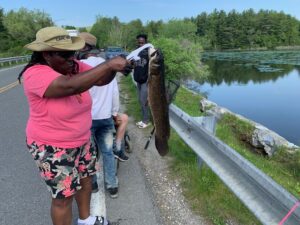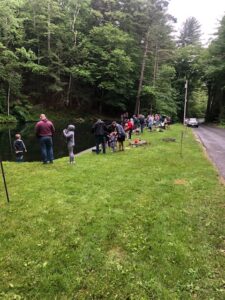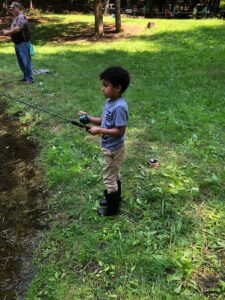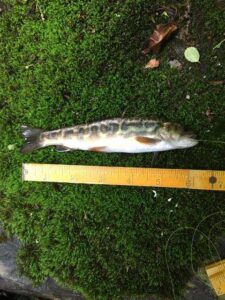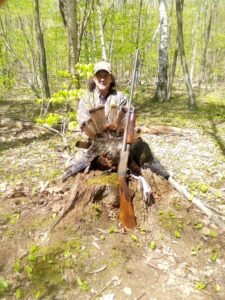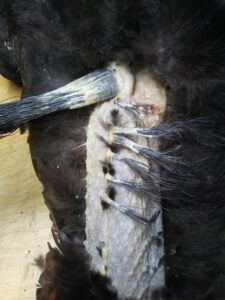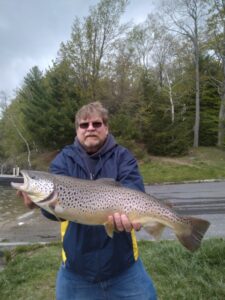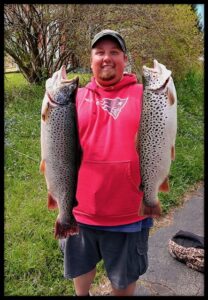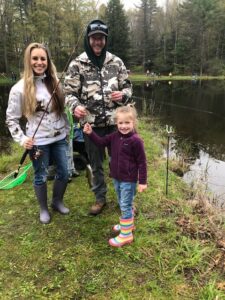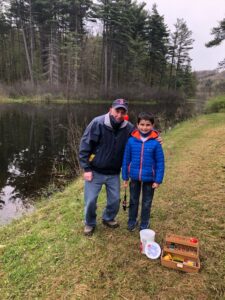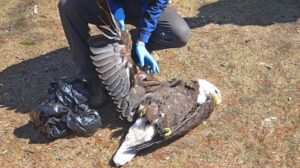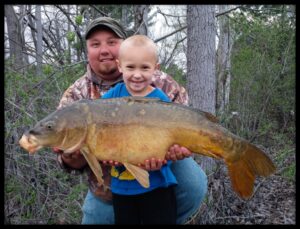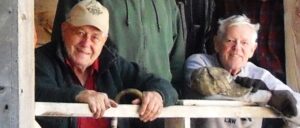State wildlife experts recently ascended to the top of the W.E.B. Du Bois Library at UMASS Amherst to band four peregrine falcon chicks. David Paulson and Tom French (retired) of the Massachusetts Division of Fisheries and Wildlife (MA DFW) removed three female chicks and one male from the nest situated on the edge of the library’s roof. The fluffy, white birds were then banded, coded by color and location, to allow wildlife researchers to track the movements and histories of the falcons over time. These efforts have even traced one female falcon born and banded at a nest in Brockton all the way to the UMASS Amherst campus.
Annual falcon banding is part of statewide initiatives to improve the conservation status of peregrine falcons from “Threatened” to “Special Concern” under the Massachusetts Endangered Species Act. For decades, the peregrine falcon population declined with the use of DDT. By 1966, not a single nesting pair could be found in any state east of the Mississippi River. Now, peregrine falcons can be seen year-round across the Commonwealth of Massachusetts.
At UMass Amherst, the falcons have become a staple of the campus community. Follow along with them via the FalconCam, a live video feed that allows viewers to check in on the falcons each spring on Twitter, @DuBoisFalcons, to muse over the latest falcon sightings, births, and happenings.
Also, recently, MA DFW personnel and noted biologist and TV personality Jeff Corwin have assessed for health and banded some four-week-old peregrine falcon hatchlings in Boston. Corwin will be showcasing this important conservation work in a new TV series airing this fall. Hope we can pick it up around here in the Berkshires.
In-person fishing class
Adults and families who want to learn how to fish on their own are invited to join MassWildlife’s Learn to Fish Class to learn all the basics for having a fun and successful fishing trip. Feel free to bring your own equipment or borrow theirs. You will need to bring their own bait. This class will cover all the fishing basics from baiting, to setting up your line, and casting followed by time to do some fishing. The location and time in the Berkshires are Pontoosuc Lake on July 20 from 5:00 to 7:00 pm.
Classes are free, but pre-registration is required and space is limited. Register by clicking https://www.mass.gov/service/angler-education-calendar. To get the most out of the in-person class, participants are encouraged to watch MassWildlife’s online video tutorial prior to attending the class. You will receive a link to video with your confirmation email when you register. Any participants ages 15 and younger are required to be accompanied by an adult.
Fishing Derby
The Berkshire Hatchery Foundation in Hartsville-New Marlborough is scheduled to have a youth fishing derby next Saturday, July 10 from 9:00 to 10:30 am at its Lower Pond at the Berkshire National Fish Hatchery, 240 Hatchery Road, Hartsville, MA. Children aged 13 and under must be accompanied by an adult. These fishing derbies will run once a month through September. The following of State guidelines regarding social distancing, face masks etc., is required.
A comical fishing day I’ll never forget
In a recent column, I noted the death of a well-known local sportsman and close friend Paul Ouellette of Lanesborough. In that column, I mentioned that he used to play a jaws harp while his brother Homer played the harmonica whenever we sat around the campfire. The jaw’s harp (a/k/a Jew’s harp, mouth harp) is a small musical instrument which is held against the teeth or lips, and plucked with the fingers making a twangy boing-boing sound. (Click onto Wikipedia to hear it). Whenever I hear it, I associate it with the sounds coming out of the Appalachian Mountains. Paul was pretty good at playing it.
musical instrument which is held against the teeth or lips, and plucked with the fingers making a twangy boing-boing sound. (Click onto Wikipedia to hear it). Whenever I hear it, I associate it with the sounds coming out of the Appalachian Mountains. Paul was pretty good at playing it.
I decided to buy one. Actually, once I got it, I didn’t have much use for it and most of the time I couldn’t find it. It would show up in my fishing vest, glove compartment or laying on the floor somewhere.
One day, for some reason, I took it with me when I went fishing the East Branch of the Westfield River near Chesterfield. The area I fished was downstream from Chesterfield Gorge but upstream of the Indian Hollow Campgrounds. It is really remote there and one would never suspect that he is fishing in Massachusetts. It is an area more like the wilderness of Maine or New Brunswick.
I should mention here and now that this occurred sometime in the late 1980’s, after the movie Deliverance came out. Readers may recall that movie was about some folks who went for a canoeing trip together in the Georgia wilderness, only to come into terrifying conflict with some inbred locals, tapping into very primal fears — man vs. nature, town vs. country, etc., and preying on masculinity, thanks to an unforgettable scene.
On this beautiful sunny, spring morning, I was walking a trail to a nice fishing spot which required about a 1-mile hike to reach. The birds were chirping, the grouse drumming – one of those mornings that you feel great to be alive.
Upon arriving at the destination, to my disappointment, there was a guy already flyfishing there. He never saw nor heard me approach from behind. Not wishing to disturb him, I went to another spot to fish about a quarter of a mile away. After an hour or so fishing there without any luck, I went back to that spot where that other guy was fishing. He was still fishing there so I sat on a nearby fallen log patiently waiting for him to leave.
He kept fishing and showed no signs of moving on. After about an hour of waiting, I took out the jaws harp from my vest and started to twang a tune. “Boing, boing, boing”, it went.
The guy froze in his place in the middle of the river and slowly turned around to see from where the sound was coming. I also froze, holding the harp at my lips, and stopped playing. Even though he looked in my direction, he didn’t see me, probably because I wearing camouflage and partially concealed by the surrounding vegetation.
He resumed flyfishing, and I resumed playing – “Boing, boing, boing”. He looked back again and I stopped again. This went on for a period of time. I should have waived to him, but something stopped me. I varied the timing of playing the harp, sometimes I would wait 5 minutes before resuming, each time when he was focusing on the fly that he was casting.
Oh, you should have been there! After a while I got laughing so hard, I could hardly play the instrument and I almost choked on it. In fact, as much as I tried to stifle my laugh, he heard it. Out of the river he splashed, with a panicked look on his face, crashed through the brush to get on the trail and off he rushed away. I never saw a person in chest waders move so quickly. His fly got stuck in some brush along the trail, but he didn’t stop to retrieve it. He just snapped it off and high tailed it out of there, periodically looking behind. He never saw me, but if he had, he would have been even more freaked out seeing this guy sitting on a log all by himself in the middle of the woods and laughing his head off.
Shame on me you say, I was probably under the influence of the Devil. Hey, I was only playing a tune on the harp.
I prefer to think that maybe the Good Lord allowed it to happen because he felt that the three of us needed a good laugh that day at the expense of that angler.
Have a great 4th of July weekend!

